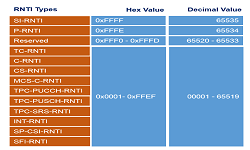5G Network Sharing: Concept, Benefits and Architectures
MOCN and MORAN Introduction
The deployment of a new telecommunication network and its operation can lead to very high costs and a long entry time to business for a operator. Sharing the network infrastructures and adopting to network virtualization can help an operator to reduce significant amount for capital and operational costs.
There are two approaches for implementing the sharing of mobile infrastructures: passive and active sharing.
- In passive sharing, the equipment shared between different mobile operators is limited to the passive network elements such as radio masts, power supplies, cabinets, towers, security alarms, etc.
- Active sharing extends the list of shared equipment to include the transport infrastructure (fiber, cables, etc.), base band processing resources, and potentially the radio spectrum.
Benefits of Network Sharing
- Cost Savings benefits
- Passive sharing can save upto 16%-35% CAPEX and 16%-35% OPEX
- Active sharing excluding spectrum can save about 33%-35% of CAPEX and 25%-33% of OPEX;
- Active sharing including spectrum can save upto 33%-45% of CAPEX and 30%-33% of OPEX;
- Core network sharing: core network sharing cost savings are limited
- Environmental benefits
- Reduces energy consumption
- Mitigate citizens’ concern over radiation
- Customer experience –sharing can lead to better quality of the services, better coverage, higher data speed
- Coverage obligation set by country regulatory can be met
Two approaches have been proposed for RAN infrastructure Sharing:
- Multi-Operator Radio Access Network (MORAN)
- Multi-Operator Core Network (MOCN)

Multi-Operator Radio Access Network (MORAN) standard proposed an architecture where the eNBs/gNBs are shared, while the core network is proprietary to each network provider. The MORAN standard also proposed the sharing of the Radio Access Network (RAN), using dedicated radio frequencies assigned to each service provider. In this approach, they can independently control cell level e.g each operator can decide his own optimization parameters, Tx Power to control the cell range and interference.
Multi-Operator Core Network (MOCN) standard allows the sharing of the same architectural elements as MORAN i.e eNBs/gNBs. However, in MOCN, the operators also share frequencies. This prevents the operators from being able to control their networks at the cell level.
A comparison summary between MORAN and MOCN is listed in table.
| Component | MORAN | MOCN |
| Core Network (EPC/5GC) | Independent | Independent |
| Base Station (eNB/gNB) | Shared | Shared |
| Frequency Spectrum | Independent | Shared |
| Cell Coverage Area | Independent | Independent |
5G RAN Sharing Architecture
5G RAN Sharing shall follow 4G, which includes MORAN and MOCN features. Consider the initial deployment for 5G will be with Non Standalone Architecture (5G NSA) option 3x (EN-DC), we could think of following 4 options for RAN sharing.
- Both LTE eNB & NR gNB with MORAN
- Both LTE eNB & NR gNB with MOCN
- LTE eNB as MORAN & NR gNB with MOCN
- LTE eNB as MOCN & NR gNB with MORAN
Both LTE eNB & NR gNB with MORAN
In this network architecture both 4G LTE eNodeB and 5g gNB is configured to support MORAN. As it is depicted in figure below, there are two core network from Operator A and Operator B as Independent Core network connected eNB and gNB. eNB does support both control plane as well as user plane where as gNB support the data plane. Both eNB and gNB is shared by Operator A and Operator B.
A cell level both operator have independent spectrum for eNB (f1, f2) and gNB (F1, F2).

Both LTE eNB & NR gNB with MOCN
In this network architecture both 4G LTE eNodeB and 5g gNB is configured to support MOCN. As it is depicted in figure below, there are two core network from Operator A and Operator B as Independent Core network connected eNB and gNB. eNB does support both control plane as well as user plane where as gNB support the data plane. Both eNB and gNB is shared by Operator A and Operator B.
A cell level both operator shared spectrum for eNB (f1) and gNB (F1).

LTE eNB as MORAN & NR gNB with MOCN
In this network architecture 4G LTE eNodeB is configured to MORAN and 5g gNB is configured to support MOCN. As it is depicted in figure below, there are two core network from Operator A and Operator B as Independent Core network connected eNB and gNB. eNB does support both control plane as well as user plane where as gNB support the data plane. Both eNB and gNB is shared by Operator A and Operator B.
A cell level both operator independent spectrum for eNB (f1,f2) and shared spectrum for gNB (F1).

LTE eNB as MOCN & NR gNB with MORAN
In this network architecture 4G LTE eNodeB is configured to MOCN and 5g gNB is configured to support MORAN. As it is depicted in figure below, there are two core network from Operator A and Operator B as Independent Core network connected eNB and gNB. eNB does support both control plane as well as user plane where as gNB support the data plane. Both eNB and gNB is shared by Operator A and Operator B.
A cell level both operator shared spectrum for eNB (f1) and independent spectrum for gNB (F1,F2).

Reference:
- White Paper: Open source architecture for multi-operator
- GSMA 5G-Guideline
- 3GPP TS 32.130 Network sharing; Concepts and requirements
- 3 GPP TS 23.251 Network sharing; Architecture and functional description
Related Post
- 5G NR Interfaces X2/Xn, S1/NG, F1 and E1 Functions
- 5G Channel Modes: Requirements and Deployment Scenarios
- 5G Self Backhaul- Integrated Access and Backhaul
- 5G Transport Network Requirement for Indian Telecom
- 5G NG Identities (UE and Network Identifiers)



